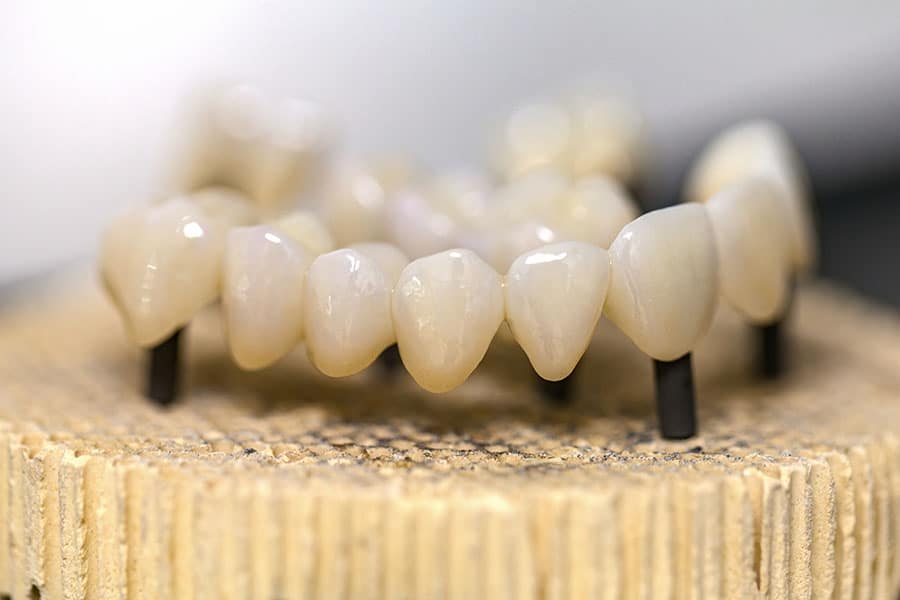Missing teeth can have a significant impact on both your appearance and functionality. Fortunately, dental bridges provide an effective solution to replace missing natural teeth and restore your smile. In this article, we will delve into the details of the dental bridge procedure and what you can expect throughout the process.
Note: Are Experiencing Tooth Pain or Need a Second Opinion in Mesa, Chandler, or Tempe, Arizona?
If you’re in Mesa, Chandler, or Tempe and are struggling with tooth pain or want a reliable second opinion, Dr. Nathan Smith of East Valley Dental Professionals is the expert you can trust. With a long-standing reputation in the community, Dr. Smith is known for his comprehensive approach and patient-friendly methods. In his 5-star reviewed, intimate family office, you’re not just another patient; you’re family. Reach out today at 480-828-3033 for a free second opinion. One of our specialties? Dental bridges.
Why Consider a Dental Bridge?
Missing a tooth can affect more than just your smile. It impacts your ability to chew and speak comfortably. Fortunately, with the modern dental bridge procedures offered at East Valley Dental Professionals, you can regain both function and confidence.
What is a Dental Bridge?
A dental bridge, simply put, replaces missing teeth. It uses crowns on either side of the gap to support the replacement tooth (or teeth), making your smile whole again. For those in the Mesa, Chandler, and Tempe regions who aren’t keen on surgical solutions like implants, dental bridges are an excellent alternative.
Understanding the Dental Bridge Procedure
- Consultation: After a thorough checkup, Dr. Smith will evaluate if a dental bridge is right for you, guiding you through the various types available.
- Preparing the Teeth: If a bridge is your best solution, the teeth adjacent to the gap (known as abutment teeth) are gently shaped to accommodate the bridge. Impressions are then sent to a lab where your unique bridge is crafted.
- Temporary Measures: To maintain your appearance and protect the prepared teeth, a temporary bridge might be placed while waiting for your permanent one.
- The Final Step: On your subsequent visit, Dr. Smith will remove the temporary bridge, ensuring the permanent one fits perfectly before cementing it into place.
Understanding the Types of Dental Bridges
In the heart of Mesa, Chandler, and Tempe, Arizona, Dr. Nathan Smith and the team at East Valley Dental Professionals are well-versed in the various types of dental bridges to best suit your needs:
- Traditional Bridges: The most commonly used type, these involve creating a crown for the tooth or implant on either side of the missing tooth, with a pontic (or artificial tooth) in between.
- Maryland Bonded Bridges: Also known as a resin-bonded bridge, this type employs a metal or porcelain framework to hold the pontic, which is then bonded to the backs of adjacent teeth.
- Cantilever Bridges: Ideal for situations where there are adjacent teeth on only one side of the missing tooth or teeth.
Dr. Smith will discuss each type with you during your consultation, ensuring you make an informed decision tailored to your specific circumstances. Regardless of the choice, you can rest assured that the solution will be both aesthetically pleasing and functionally efficient.
Why Choose a Dental Bridge?
- Aesthetics: Smile with confidence, knowing that gaps in your teeth are a thing of the past.
- Functionality: Speak and chew naturally without discomfort.
- Protection: Prevent remaining teeth from shifting, reducing the risk of other dental complications.
Details About Dental Bridges and How This Relates to Your Smile
Let’s dive deeper into the interplay between teeth, gums, dental bridges, and the components that make this restorative procedure successful.
Teeth and Gums: The foundation of your oral health, teeth and gums play a crucial role in the efficacy and longevity of dental treatments, especially when considering dental bridges. Healthy gums provide the supportive tissue around which dental bridges anchor, while the abutting teeth (those on either side of the missing tooth or gap) act as the primary pillars for holding the bridge securely in place. Maintaining the health of these structures is paramount for the success and durability of a dental bridge.
Permanent Dental Bridges: A permanent dental bridge is designed to replace missing teeth for the long term. Unlike removable devices such as dentures, once a permanent bridge is placed, it doesn’t need daily removal or special cleaning beyond regular dental hygiene practices. Its permanency ensures a more natural appearance and function, allowing individuals to eat, speak, and smile with greater confidence.
Dental Cement: This is the adhesive agent used to secure dental bridges, crowns, or other prostheses to the natural teeth. In the context of a dental bridge, dental cement is applied to the abutment teeth (or the teeth adjacent to the missing tooth) to ensure the bridge remains in place. The cement is designed to withstand the pressures of biting and chewing, providing a secure and lasting bond. When applied correctly by experienced professionals like Dr. Nathan Smith of East Valley Dental Professionals, dental cement ensures the stability of the bridge for years.
Pontics: A critical component of the dental bridge, the pontic is the term used to describe the artificial tooth that replaces the missing tooth. It fills the space where the natural tooth once was, bridging the gap between the remaining natural teeth. Pontics are designed to resemble natural teeth in color, shape, and size, ensuring a seamless integration with the rest of the teeth. They are held in place by being anchored to the surrounding teeth, either via dental crowns or bonded to a metal or porcelain framework.
In conclusion, the success of a dental bridge lies in the careful orchestration of all these elements. The health of the teeth and gums, combined with the strength of the dental cement and the precision design of the pontics, all contribute to the efficacy and aesthetic appeal of a dental bridge, restoring both function and beauty to the patient’s smile. If you’re considering a dental bridge, it’s essential to understand these components and their roles in ensuring the longevity and appearance of your restoration.
Caring for Your Dental Bridge
Dr. Smith and his team will provide you with detailed guidance on maintaining your bridge. Regular check-ups, daily brushing and flossing, and avoiding excessive force on the bridge are key.
For those in Mesa, Chandler, or Tempe, Arizona, there’s no better place for comprehensive dental care than East Valley Dental Professionals. Your comfort and satisfaction are our top priorities. Call 480-828-3033 today and let Dr. Nathan Smith provide you with a second opinion for free. Experience dentistry done right, in a warm, family-friendly environment.

